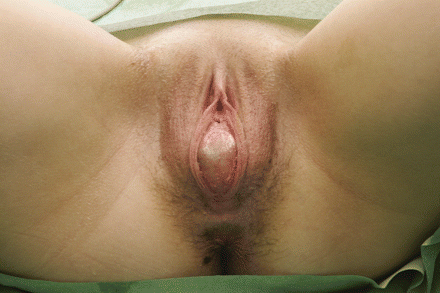Summary
Diagnósticos diferenciais
comuns
- Amenorreia hipotalâmica primária
- Estresse emocional/físico, transtorno alimentar ou deficiência relativa de energia no esporte (RED-S)
- Retardo constitucional
- Estado de desnutrição ou doença crônica
- Síndrome de Kallman (hipogonadismo hipogonadotrófico)
- Hiperprolactinemia
- Síndrome do ovário policístico (SOPC)
- Hiperplasia adrenal congênita não clássica
- Síndrome de Turner ou disgenesia gonadal mista
- Síndrome de Mayer-Rokitansky-Kuster-Hauser (agenesia mülleriana)
- Obstrução do trato de saída, incluindo hímen não perfurado ou septo vaginal transverso
Incomuns
- Craniofaringioma
- Mutações no receptor de hormônio liberador de gonadotrofina (GnRH)
- Pós-encefalite
- Tumor ovariano produtor de androgênios
- Tumor adrenal produtor de androgênios
- Disgenesia gonadal XY (síndrome de Swyer)
- deficiência de 5-alfa redutase
- Deficiência na 17-alfa-hidroxilase (CYP17)
- Síndrome da insensibilidade ao androgênio
Colaboradores
Autores
Meir Jonathon Solnik, MD

Professor of Obstetrics and Gynecology, Medical Imaging (by cross-appointment)
Temerty Faculty of Medicine
University of Toronto
Head of Gynecology and Minimally Invasive Surgery
Mount Sinai Hospital & Women’s College Hospital
Toronto
Canada
Disclosures
MJS serves as an advisory board member for Pfizer, Integra Health, and Abbvie; and serves as a medical advisor for Felix Health Inc.
Acknowledgements
Dr Meir Jonathon Solnik would like to gratefully acknowledge Dr Jessica Papillon-Smith, a previous contributor to this topic.
Disclosures
JP-S declared that she had no competing interests.
Peer reviewers
Anne K Smith, MD, MS, FACOG
Assistant Professor
Yale University
New Haven
CT
Disclosures
AKS declares that she has no competing interests.
Rachana Shah, MD
Associate Professor of Pediatrics
Children’s Hospital of Philadelphia
Philadelphia
PA
Disclosures
RS declares that she has no competing interests.
Mary Ann Lumsden, BSc Hons, MBBS, MRCOG, MD, FRCOG
Head of Section
Reproductive and Maternal Medicine
University of Glasgow Royal Infirmary
Glasgow
Scotland
Disclosures
MAL declares that she has no competing interests.
Peer reviewer acknowledgements
BMJ Best Practice topics are updated on a rolling basis in line with developments in evidence and guidance. The peer reviewers listed here have reviewed the content at least once during the history of the topic.
Disclosures
Peer reviewer affiliations and disclosures pertain to the time of the review.
References
Key articles
Practice Committee of the American Society for Reproductive Medicine. Current evaluation of amenorrhea: a committee opinion. Fertil Steril. 2024 Jul;122(1):52-61.Full text Abstract
American College of Obstetricians and Gynecologists' Committee on Practice Bulletins-Gynecology. ACOG Committee Opinion No. 605: primary ovarian insufficiency in adolescents and young women. Obstet Gynecol. 2014 Jul;124(1):193-7.Full text Abstract
Teede HJ, Tay CT, Laven JJE, et al. Recommendations from the 2023 international evidence-based guideline for the assessment and management of polycystic ovary syndrome. J Clin Endocrinol Metab. 2023 Sep 18;108(10):2447-69.Full text Abstract
American College of Obstetricians and Gynecologists' Committee on Adolescent Health Care-Gynecology. ACOG Committee Opinion No. 728: Müllerian agenesis: diagnosis, management, and treatment. Obstet Gynecol. 2018 Jan;131(1):e35-42.Full text Abstract
Reference articles
A full list of sources referenced in this topic is available to users with access to all of BMJ Best Practice.

Guidelines
- Clinical practice guidelines for the care of girls and women with Turner syndrome: proceedings from the 2023 Aarhus International Turner Syndrome Meeting
- Current evaluation of amenorrhea: a committee opinion
More GuidelinesLog in or subscribe to access all of BMJ Best Practice
Use of this content is subject to our disclaimer